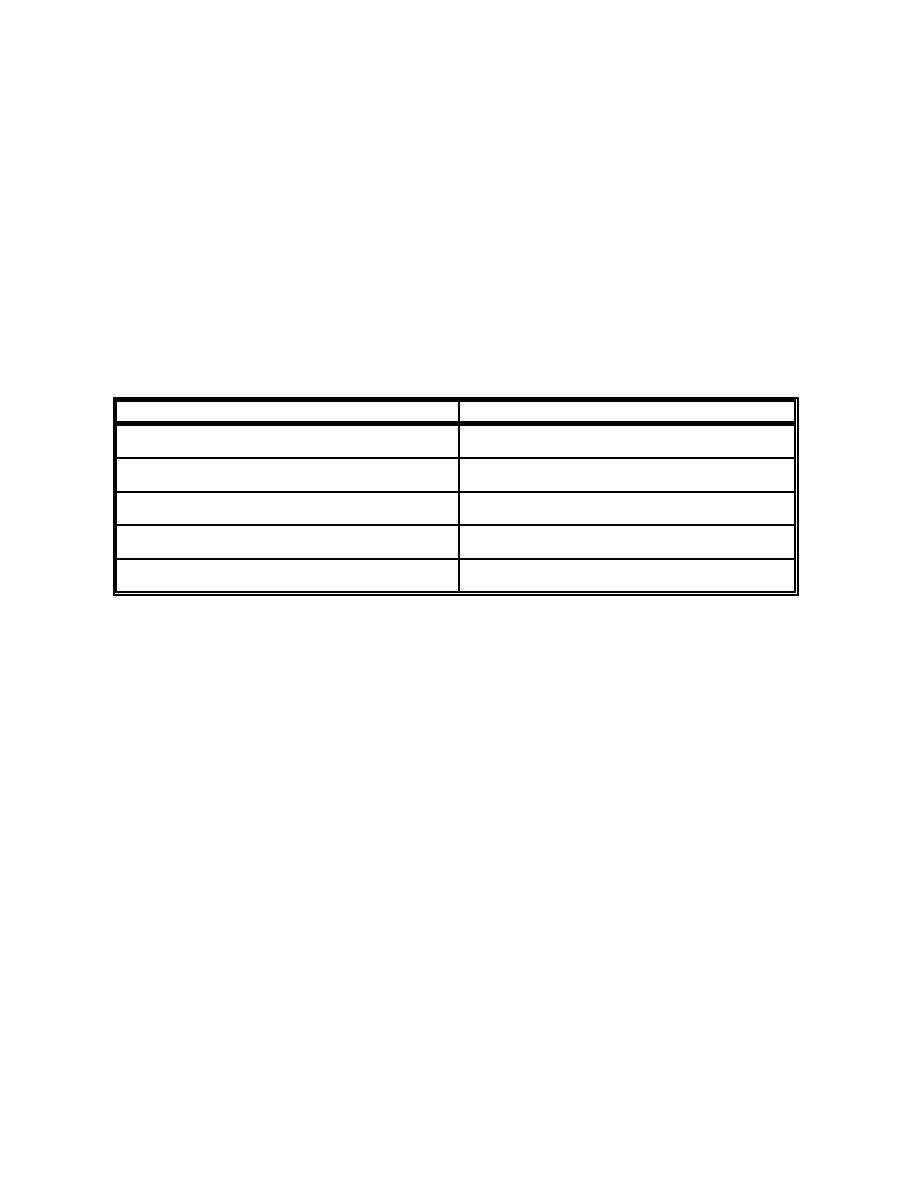
4-11. HEAT CRAMPS
a. Symptoms. Painful cramps of the muscles may occur following exposure to
heat. Heat cramps result primarily from excessive loss of salt from the body. The
muscles of the extremities and of the abdominal wall are usually involved and the
cramps may be of great severity. Body temperature is normal.
b. Treatment. Heat cramps are promptly relieved by replacing the salt lost from
the body. In the field situation, the patient should drink at least 250 cc of water (1/4
canteen), take two 10 grain (648 mg) salt tablets, followed by the rest of the water in the
canteen. In the absence of salt tablets, add other source of salt, such as adding C-
ration salt to any food or beverage is acceptable. If salt is added to a beverage or
water, it should not exceed 0.1 percent strength, as noted in Table 4-2.
SALT
DILUTING WATER
2 ten-grain salt tablets
1 quart canteen
4 ten-grain salt tablets
2 quart canteen
1 1/3 level mess kit spoons of salt
5 gallon can
9 level mess kit spoons of salt
Lyster bag
1 level canteen cup of salt
250-gallon water trailer
Table 4-2. Preparation of 0.1 percent salt solution.
4-12. HEAT EXHAUSTION
Heat exhaustion results from excessive loss of water from the body (with
inadequate fluid replacement), resulting in decreased blood volume. Salt depletion is
often present, but not always. The condition is characterized by heavy sweating, pallor
of the skin, low blood pressure, and other indications of collapse of the circulatory
system. The mortality rate from this disorder is extremely low, and as a rule, the
removal of the patient to a cool environment, rest, and the administration of salt solution
will result in prompt recovery.
a. Clinical Picture. Heat exhaustion is manifested by weakness, dizziness,
faintness (especially on standing) and other symptoms such as nausea and muscle
cramps may also be present. Occasionally, cramps of the extremities or abdominal
muscles occur. Consciousness is rarely lost. The mouth temperature may be below
normal or slightly elevated, but the rectal temperature is usually elevated (99 to 101).
The skin is usually cool, and there is profuse perspiration. The pulse rate is rapid (140
to 200 per minute), and the blood pressure may be lowered.
MD0008
4-12


 Previous Page
Previous Page
